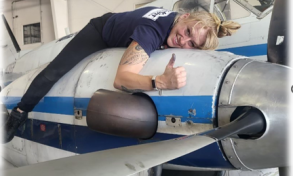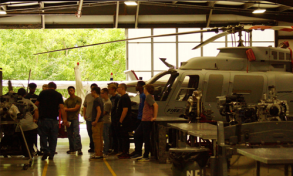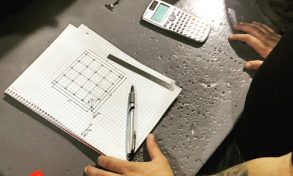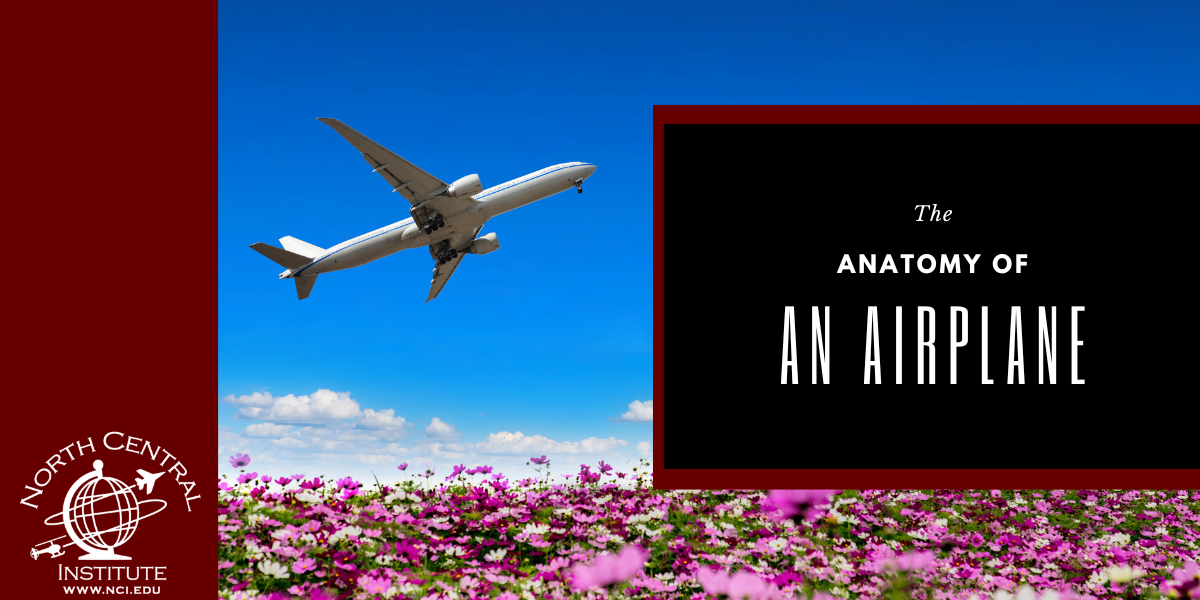Although there can be vast differences in the various types of airplanes, they all have the same general components. These parts all working together is what allows airplanes to not only get into the air but stay in the air. Each of their individual functions will be explored below.
Fuselage
When you look at an airplane, chances are you are going to notice the fuselage first. This is the body of the aircraft. This long hollow tube is where you will find the passengers, flight crew, and cargo. Not only is the fuselage hollow to hold people and cargo, it is also hollow to reduce the weight of the airplane itself. Depending on the purpose of the airplane, the shape of the fuselage may be a little different. For airplanes that are traveling at very fast, or even supersonic, speeds, the fuselage will be more slender and streamlined to reduce drag. All other parts of an airplane are based around the fuselage.
Cockpit
The cockpit is located at the front of the fuselage. This is where you will find the pilots and everything it takes to operate the plane. Much like your car having a dashboard, pilots have an instrument panel that will tell them key information about the plane. Pilots can control heading, speed, altitude, and more with their flight controls. Their navigation displays can show them route information, including waypoints, windspeed, and wind direction. The equipment to communicate with Air Traffic Control (ATC) is also located in the cockpit along with the transponder that will show ATC the plane’s location.
Wings
Without wings, airplanes would not be able to get off the ground. There are many parts that make up the wings of a plane and they are all critical to creating the right amount of lift and drag a pilot needs to keep the airplane in the sky or to come in for a safe landing. Ailerons and flaps are both located on the trailing edge of the wing. They can create more lift or drag to help the airplane turn and to create additional lift during takeoff. Slats are located on the front of the wing and also help to create lift. Oppositely, the spoilers on the wings are there to reduce lift and allow the plane to descend.
Tail
The tail, also known as the empennage, is located at the very end of the fuselage. It can help the airplane with stability. The horizontal stabilizer keeps an airplane’s nose from moving up and down, while the vertical stabilizer helps to prevent side-to-side motion. In combination with the wings, an airplane’s tail can also help create lift. The elevator and rudder, which are also located on the tail, can help pilots to change the course of the airplane.
Engine
The engine is also one of the most critical parts of flight. It creates the thrust needed for the plane to fly. In general, there are two types of engine:
- Gas Turbine: This is the most common engine type you will see in m0dern airliners. Air is compressed, mixed with fuel, then there is ignition and the exhaust that is created is expelled from the engine causing the thrust.
- Piston-powered: Generally used on smaller airplanes, such as those used for training or general aviation. For this type of engine, a crankshaft is able to give a constant and variable rotating speed which in turn rotates propellers located on the front of the engine.
Propeller(s)
Propellers are just another part of an airplane that can create lift. Propellers are installed vertically on a plane and help it to move forward, instead of upward like the wings. It is the thrust and forward motion that propellers create that cause air to pass over the wings. This in turn allows for vertical lift.
Landing Gear
Once you are up in the sky, you will need to come down eventually. The landing gear is located on the under side of the airplane. It consists of wheels and shock struts to soften the impact of landing. While many landing gear are retractable, not all of them are. A tricycle type wheel configuration is the most common. With one wheel in front and two behind- or two located in the front and one in the back- this allows for the most stability during landing.
Aviation Maintenance
It takes all of these different parts of an airplane working together to safely transport both people and cargo through the air and around the world. If you are wondering what it takes to maintain these systems and keep both planes and people safe, you can learn more about becoming an aviation maintenance technician by contacting NCI today!










